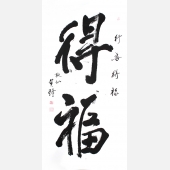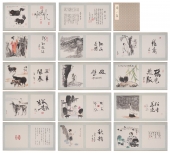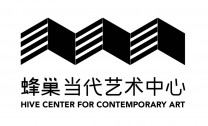- 资质:诚 艺
- 评分:
1分 2分 3分 4分 5分 6分 7分 8分 9分 10分 8.4分
- 印象:
- 经营时间:16年
- 展厅面积:
- 地 区:北京-朝阳
蜂巢·生成 第三十二回 塔、群岛、舷梯:朱烨个展
- 展览时间:2018-07-21 - 2018-08-25
- 展览城市:北京-朝阳
- 展览地点:蜂巢(北京)当代艺术中心 北京市酒仙桥路4号798艺术区E06
- 策 展 人:杨鉴
- 参展人员:
展览介绍
蜂巢·生成 第三十二回
Hive-Becoming XXXII
塔、群岛、舷梯:朱烨个展
Tower, Archipelago and Gangway: Zhu Ye Solo Exhibition
新闻稿
Press Release
艺术家| Artist: 朱烨|Zhu Ye
策展人| Curator: 杨鉴|Yang Jian
开幕时间| Opening: 2018.7.21 16:00
展览时间| Exhibition Dates: 2018.7.21-8.25
地点|Venue:
蜂巢(北京)当代艺术中心| Hive Center for Contemporary Art (Beijing)
地址|Add.
北京市酒仙桥路4号798艺术区E06 |
E06, 798 Art Distrct, Chaoyang Distrct, Beijing, China
蜂巢(北京)当代艺术中心将于2018年7月21日至8月25日在C、D、E三个展厅呈现“蜂巢·生成 第三十二回 塔、群岛、舷梯:朱烨个展”。 本次展览由蜂巢青年策展人杨鉴策划,将呈现朱烨2016年至今的绘画作品。
朱烨1985年出生于浙江台州,2008年毕业于中国美术学院油画系。朱烨的画面从视觉上很容易让人将他和立体派链接,相同之处在于他们都同样渴望在二维平面表现出三维世界中能感知到的明暗、光线、空气、氛围甚至是时间,但是朱烨基于现代处境,植入了对于当下以及空间、时间之信息载体的个人化理解。朱烨像是预设了当代观众对于三维空间的认知,因而大胆的简化、扁平化了立体派的视觉层次,使得观众需要利用其联想能力去填补他省去的时空。平面却又错落的视觉效果平面地记录了扭动中的图像模块,呈现了不同区块以迥异角度在相同平面上构成同一物象的可能性,观者可以认定艺术家描绘的是一种真实存在的具体物,但是又无法佐证自己的想法,形成了一种非具象的真实画面。拥有现代生活经验的人们几乎都具备一定能力,将2D呈现的事物在脑中如3D建模般构想出来,使其可见于自己的思维当中,而朱烨对于观众的大胆预设也正是基于他对现代视觉经验的敏锐观察与信任。
沿着现代主义的线索,朱烨的绘画让人联系到卡齐米尔·马列维奇对于削弱客体,以抽象的形态和线条取而代之的消解方式,并且二者都处于具有疯狂创造力时代,同时裹挟着对于所处时代理想主义般的仪式化视觉转化。不同的是马列维奇的创作带有宗教般的终极理想与政治野心,而朱烨则像是在设问,搭建一个斡旋的谈判空间,选择对于诸多具体事物保持一种失忆般的真空状态,留下断断续续却又难以名状的信息碎片,投射信息过载为这个时代留下的结症,以及一个可供讨论的开放话语空间。
朱烨强调他的绘画服务于个人化自建的一个微型生态,而要理解绘画作为输出点如何生效,了解朱烨个人化的工作习惯就显得必要。朱烨计划经济般得为自己的工作排班,画面中每个被切割的区域在某个预设时间段当中完成,倘若沿着朱烨画面当中的直线切割将画面剪碎,每一个碎片般的画面都可以拥有一个自己独立的生产日期。因此朱烨的作品与作品之间、画面中的块面之间都存在一种群岛式的结构关系。这些局部被像是自然或是人为的因素划定为一个整体,相互之间却并没有紧密连接,而是以各种相对密切的介质构成一种联系,类似于一种海德格尔所说的“共在”(Mitsein)关系——群岛中的每个岛依然有孤独感,却都从属于一个共同的命名之下。
Hive Center for Contemporary Art(Beijing) is honored to pronounce, Zhu Ye’s solo exhibition ‘Hive-Becoming XXXII Tower, Archipelago and Gangway’ will be presented at Exhibition Hall C, D and E from July 21st to August 25th 2018. This exhibition curated by Yang Jian, who is a young curator from Hive Center. This exhibition will present Zhu Ye’s artworks since 2016.
Zhu Ye was born in Taizhou, Zhejiang, 1985. He graduated from the oil painting department of China Central Academy Of Fine Arts in 2008. At first glance, audience probably will compare Zhu Ye’s paintings with Cubist paintings given the fact that both are equally eager to show in two-dimensional planes the elements perceived in the three-dimensional world, namely light-and-shadow, air, atmosphere and even time, etc., but they will detect that Zhu Ye has set his foot in the contemporary ground and implanted his personal interpretations of the information vehicles like time and space into his paintings. Seemingly he has predicted the possible trajectories contemporary audience would follow to perceive three-dimensional space, so he boldly simplifies and flattens Cubist visual layers, to exploit audience’s associative ability to fill the omitted time and space. The flat but staggered visual effects look like graphical and twisting modules, and the modules perform the possibilities of composing the same image by altering angles on the plane. You must have assumed that what the artist depicted is something specific and real, yet you fail to evidence your assumption, so you admit it’s a non-figurative and realistic picture. Everyone who has led a modern life today can present two-dimensional images into three-dimensional models and make them visible in his own mind,and Zhu Ye’s bold presupposition about the audience is dependent on his keen observation and trust in modern visual experience.
Following the path of Modernism, I can’t help but associate his painting with the signature deconstructing approaches of Kazimir Severinovich Malevich, where he substituted abstract forms and lines for the weakened objects, or maybe what truly allows me to connect their arts is that they are both in the identically innovative times and that their arts both transform their idealism about the times into ritualized visuals. Yet, the difference is that Malevich’s is the pilgrim’s ultimate ideal and political ambition, while Zhu Ye’s is questions, a mediation space set up for negotiation, a silent oblivion void of specific things, intermittent and indescribable pieces of information left behind, information projected to overload the symptoms of this era and a space for open discussion.
Zhu Ye emphasizes that his paintings serve nothing but the miniature eco-system created by himself. To understand how his paintings work as a point of outlet it is absolutely necessary to look into his work habits. The artist has a planned-economy style work schedule with every specific preset time frame devoted to the completion of a certain segment of a dissected painting. If cut into pieces along the straight lines on the paintings, every fragment of painting would have its own date of production. Therefore a sort of archipelago-style structural relation exists among paintings and among fragments of a painting which, though apparently defined naturally or collectively as an entity, are loosely connected. They are in fact linked by mediums with relatively close connections, generating a relationship similar to what Martin Heidegger characterized as “Mitsein” (roughly equivalent to “coexistence” in English)—each and every island within an archipelago, while still plagued with loneliness, shares a common name.

 黄琦
黄琦 武中奇
武中奇 测试用艺术
测试用艺术 尼玛泽仁
尼玛泽仁







